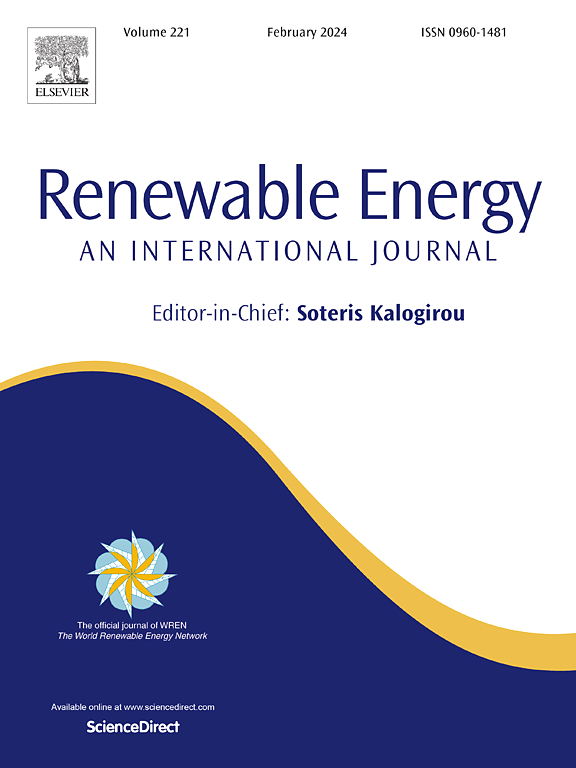从农业残留物中优化生物炭:用机器学习预测元素组成
IF 9.1
1区 工程技术
Q1 ENERGY & FUELS
引用次数: 0
摘要
生物炭是一种性质由其元素组成决定的材料,已被推广为处理各种生物质废物(包括农业残留物)的可持续方法。然而,研究中这些成分的相当大的可变性需要精确的预测技术。本研究遵循PRISMA规则进行数据收集和研究选择,从38篇已发表的研究中收集了原料性质和热解参数的数据。建立并采用了一种新的面向特征的输入方法,利用k近邻(KNN)或随机森林(RF)输入器对具有不同特征的特征进行缺失值的填充。然后将重新处理的数据输入到六个不同的数据集中,并使用梯度增强回归模型进行分析,以预测生物炭中碳(C)、氢(H)、氧(O)、氮(N)、磷(P)和钾(K)的含量。严格的机器学习过程产生了优异的准确率:C (R2 = 0.9088, RMSE = 4.0614)、H (R2 = 0.9068, RMSE = 0.4180)、O (R2 = 0.9172, RMSE = 2.6475)、N (R2 = 0.8950, RMSE = 0.3416)、P (R2 = 0.9699, RMSE = 0.0244)和K (R2 = 0.9464, RMSE = 0.3842)。对特征重要性的综合分析表明,与热解参数相比,原料性质在确定生物炭元素组成方面通常具有更重要的意义。最高加热温度(HHT)是对H和O含量影响最大的参数,而N、P和K的含量主要由它们在原料中的含量决定。根据这些见解,得出了最佳热解参数,以定制具有不同元素组成的生物炭,用于各种应用。开发的模型为预测来自各种农业生物质的生物炭的元素组成提供了一个强大的框架,从而消除了复杂和资源密集型实验室试验的需要。本文章由计算机程序翻译,如有差异,请以英文原文为准。

Optimising biochar from agricultural residues: Predicting elemental composition with machine learning
Biochar, a material whose properties are critically defined by its elemental composition, has been promoted as a sustainable way to treat various biomass wastes, including agricultural residues. However, considerable variability in these compositions across studies necessitates precise predictive techniques. This research followed the PRISMA rules for data collection and study selection, compiling data on feedstock properties and pyrolysis parameters from 38 published studies. A novel Feature-oriented Imputation method was established and employed, utilizing K-Nearest Neighbours (KNN) or Random Forest (RF) imputer to fill in missing values for features with differing characteristics. The reprocessed data were then fed into six distinct datasets and analyzed using a Gradient Boosting Regression model to predict the contents of carbon (C), hydrogen (H), oxygen (O), nitrogen (N), phosphorus (P), and potassium (K) in biochar. The rigorous machine learning process yielded excellent accuracy rates: C (R2 = 0.9088, RMSE = 4.0614), H (R2 = 0.9068, RMSE = 0.4180), O (R2 = 0.9172, RMSE = 2.6475), N (R2 = 0.8950, RMSE = 0.3416), P (R2 = 0.9699, RMSE = 0.0244), and K (R2 = 0.9464, RMSE = 0.3842). A comprehensive analysis of feature importance revealed that feedstock properties generally hold more significance in determining the elemental composition of biochar compared to pyrolysis parameters. The highest heating temperature (HHT) emerged as the most influential parameter for the content of H and O, while the contents of N, P, and K were predominantly determined by their respective levels in the feedstock. From these insights, optimal pyrolysis parameters were derived to tailor biochar with different elemental compositions for various applications. The developed models offer a robust framework for predicting the elemental compositions of biochar derived from various agricultural biomass, thereby eliminating the need for complex and resource-intensive laboratory trials.
求助全文
通过发布文献求助,成功后即可免费获取论文全文。
去求助
来源期刊

Renewable Energy
工程技术-能源与燃料
CiteScore
18.40
自引率
9.20%
发文量
1955
审稿时长
6.6 months
期刊介绍:
Renewable Energy journal is dedicated to advancing knowledge and disseminating insights on various topics and technologies within renewable energy systems and components. Our mission is to support researchers, engineers, economists, manufacturers, NGOs, associations, and societies in staying updated on new developments in their respective fields and applying alternative energy solutions to current practices.
As an international, multidisciplinary journal in renewable energy engineering and research, we strive to be a premier peer-reviewed platform and a trusted source of original research and reviews in the field of renewable energy. Join us in our endeavor to drive innovation and progress in sustainable energy solutions.
 求助内容:
求助内容: 应助结果提醒方式:
应助结果提醒方式:


